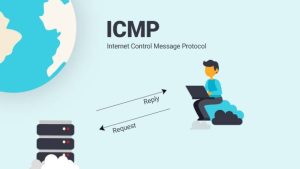Do you know how many likes are registered daily on Instagram for various posts? It’s 4.2 billion! That’s a massive number.
However, are your posts receiving this enormous engagement on your Instagram account? If not, you must focus on calculating various engagement rates.
With concrete data, you can refine social media strategies to attract your audience and drive engagement more efficiently. Furthermore you can buy Instagram followers to bring more engagement.
Here is a complete blog that focuses on several ways to calculate engagement rates on Instagram. These calculations will help you understand each metric’s significance for a better social media presence.
Defining Engagement Rate on Instagram
The engagement rate on Instagram measures the amount of audience interaction your content receives. It consists of likes, comments, shares, and saves.
Unlike follower count, which is only a number that shows your audience size, engagement rate represents how many followers are truly interacting with your content.
High engagement = High follower interaction
Low engagement = Low follower interaction
6 Measures to Calculate Engagement Rate on Instagram
Calculate the engagement rate, and you will have a clear picture of the interaction of your audience with your content. Hence, we are discussing the six measures to calculate engagement on Instagram:
-
Engagement Rate by Reach (ERR)
You can find this rate by dividing the overall engagements by the total reach and then multiplying the result by 100. This method is powerful because it shows the specific users who engaged with your content rather than those who viewed it.
Furthermore, it portrays the level of engagement your content has with its audience. For example, if your post gets 200 interactions and reaches 1,000 people, your ERR would be 20%.
2. Engagement Rate by Posts (ER Post)
To extract ER engagement, divide the total engagements by the number of posts, then divide by the number of followers, and multiply by 100.
This measure gives a mean engagement rate for each post. Simply put, it gives a glimpse into the overall success of your content plan.
For example, if you get 500 interactions from 10 posts with 2,000 followers, your Post Engagement Rate would be 2.5%.
3. Engagement Rate by Impressions (ER Impressions)
ER Impressions are determined by dividing the sum of engagements by the sum of impressions and multiplying by 100.
This measure assesses the level of interest your content generates about its total number of views. If your post got 300 engagements out of 5,000 impressions, the ER Impressions would be 6%.
4. Daily Engagement Rate (Daily ER)
It involves dividing the total daily engagements by the total number of followers and multiplying by 100.
This measurement gives a snapshot of how involved your audience is with your content every day. If you get 150 interactions in one day and have 1,500 followers, your Daily Engagement Rate (ER) would be 10%.
This metric helps monitor how regularly your audience engages with your content and detects any patterns or changes in their involvement.
5. Engagement Rate by Views (ER Views)
It involves dividing the total engagements by the total views and multiplying the result by 100. This measurement is crucial for video content because it evaluates the level of audience interaction compared to the video’s view count.
For instance, if your video got 100 engagements out of 2,000 views, the Engagement Rate for Views would be 5%. This metric helps gauge how well your video content engages viewers and can inform your future video production strategies.
6. Cost Per Engagement (CPE)
Calculating Cost Per Engagement (CPE) involves dividing the overall cost of a post by the total number of engagements it garners. This measure is crucial for assessing the cost efficiency of paid advertising and partnerships with influencers.
If, for example, you invested $200 on a sponsored post that obtained 400 engagements, your cost per engagement (CPE) would be $0.50. Furthermore, you can evaluate the worth of your investment based on audience engagement and allocate future budget for marketing strategies
How to Use Engagement Rates in Your Social Strategy?
Instagram is a platform that helps you gain information regarding various engagements. You can regularly analyze these metrics to view your best-circulated content on this platform.
Furthermore, it will provide information on which scheduled post receives more engagement than on-the-spot content.
Moreover, always perform the analysis to build a solid strategy for Instagram that eventually leads you to a better digital presence.
Conclusion: Track and Analyze Instagram Engagement Rate!
Monitor your Instagram engagement rate to understand your audience’s demands and refine your content strategy accordingly.
You can use the six methods provided in our blog to recognize the pattern of the audience and prepare better decisions for the content.
Furthermore, you can contact Thunderclap.it for the best Instagram growth services.
So, what are you waiting for? Elevate your IG journey today!






